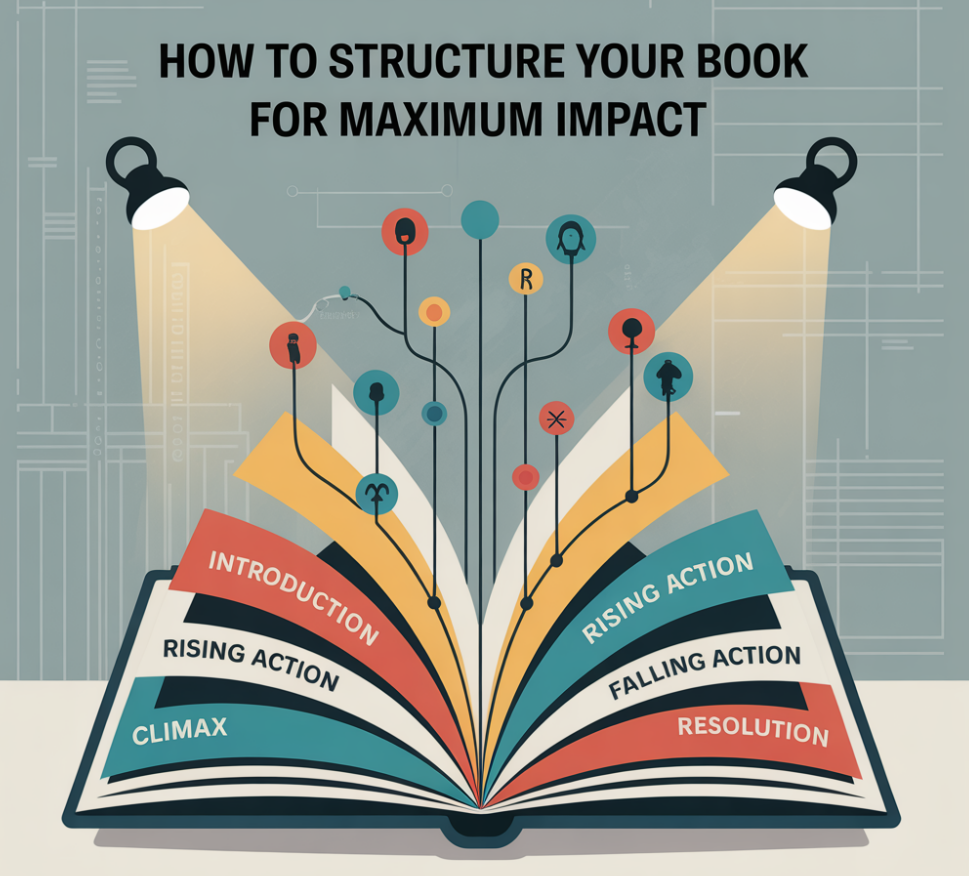Common Myths About Self-Publishing Debunked

Debunking the Myth: “Self-Published Books Lack Quality”
When folks think of self-publishing, this pesky myth says that self-published books can’t match the quality of traditionally published ones. That’s nonsense! Let’s look at some fantastic success stories, like Andy Weir’s novel “The Martian.” This nugget of gold started as a self-published serial, proving that quality knows no bounds, especially in self-publishing.
Now, for those worrying about what kind of tools are available to self-publishers today, there is no need to fret. The world of self-publishing has seen significant improvements, thanks to tech that makes creating top-notch books much more accessible. From design platforms to formatting tools, you have everything you need to make your book as polished as a diamond.
Professional editing is a game-changer in self-publishing. Many successful self-published authors will tell you that a keen editor can help transform a good book into a masterpiece. Just because you’re self-publishing doesn’t mean you have to skimp on professional touch. It’s more than worth it to invest in good editing services, as they can significantly enhance the quality of your work.
It’s time to shatter the old stereotype that traditional publishing is the gold standard for quality. Quality is more about the writer’s dedication to their craft and the resources they’re willing to utilize, not just how their book hits the market. Self-publishing empowers authors to create work that’s as polished and impactful as traditional formats, if not more. It’s a playground of opportunities, offering you the control and confidence to bring your vision to life.
Myth vs. Reality: “Self-Publishing is Only for Beginners”
It’s a misconception to think self-publishing is just a launchpad for newbies playing in the big leagues. More seasoned authors are steering their ships into self-publishing waters and doing just fine.
Take a peek at authors like James Altucher and Guy Kawasaki. They embarked on the self-publishing journey, deciding it wasn’t just for the greenhorns. Experienced writers can find a lot of freedom in self-publishing without the constraints that traditionally published authors often face.
So, how do authors become self-publishing whizzes? It’s all about education and adaptability. The learning curve is there, sure, but it’s manageable. There are days when learning the ropes of marketing, cover design, and even some tech can be a headache, but the control you gain is worth the brain strain.
Authors with a few books under their belt have refined their craft, yes, but that doesn’t mean they stand still. For them, self-publishing is as much about the thrill of creation and control as it is about expanding their audience and avenues.
Self-publishing isn’t a one-size-fits-all solution. It’s a buffet of choices that can suit an author’s needs, especially those who’ve done the traditional dance before and want to try something different. The idea that self-publishing is just an entry-level gig is a myth. It’s a legitimate option for authors at any point in their careers, offering a sense of freedom and flexibility that can inspire new creative paths.
Separating Fact from Fiction: “Self-Published Books Don’t Make Money”
Let’s talk bucks because this stubborn idea is floating around that self-published authors can’t make a living. Spoiler alert: that’s not true. Authors like Hugh Howey, who self-published his hit book ‘Wool,’ have not only earned a pretty penny but also snagged deals that many traditionally published authors dream about.
So, how do these authors rake in the cash? It’s all about strategy, plain and simple. Monetizing self-published work involves clever marketing, understanding your audience, and a bit of hustle. The good news? You keep more of the profits since you cut out the middleman. The royalty checks may look different, but the control over pricing and promotions can put you in the driver’s seat.
Comparing profit margins from self-publishing to traditional publishing isn’t as clear-cut as it seems. You might get an advance with traditional deals, but you split your profits in multiple ways. Self-publishing offers you the chance to pocket more from each sale. It’s not about selling a million copies. Sometimes, it’s about thoughtful financial planning and knowing your worth.
And don’t buy into the myth of financial scarcity. Just because the process looks different doesn’t mean it’s less financially viable. Countless authors have carved out successful, economically rewarding paths by self-publishing. So, don’t write off self-publishing as a no-money venture. With the right approach, the money will follow, giving you a sense of security and optimism about your writing career.
The Digital Age: Self-Publishing is Exclusively Online
Think self-publishing’s all about ebooks and online sales? Nope, it’s not just a digital-only playground. Look into print-on-demand services. They let you create physical copies of your book without stockpiling them at home. That means readers can get their hands on your book online and offline.
Physical distribution for self-published books is on an upward trend. This isn’t just a pipe dream anymore. With services like IngramSpark or Amazon’s print services, your book can shimmy its way into brick-and-mortar bookstores, libraries, and beyond.
Finding a balance between digital and physical sales is where things get interesting. While the internet’s been a blessing for getting books out there, having a dual strategy—reaching both digital readers and those who prefer the feel of paper between their fingers—can boost your reach.
Plenty of offline chances are ripe for self-published authors to explore. Book fairs, signings, and even local community shops can open doors for physical book sales you might not have considered. It’s about thinking outside the digital box and embracing the real-world connections you can make with your audience.
Self-Publishing is a Lone Battle: “Authors Must Do Everything Themselves”
Self-publishing can seem like you’re stranded on a deserted island, but that’s far from reality. With the rise of virtual assistants and freelancers, you can get help with editing, formatting, and marketing without breaking the bank.
Building a team is easier than ever. Authors can collaborate with marketers, cover designers, and copy editors to transform their manuscripts into professional-quality books. It’s not all solo work; it’s about making wise choices and finding the right partners.
Community is key in this journey. Online groups, forums, and self-publishing symposiums offer support, advice, and a sense of camaraderie along the way. You’re not in isolation—instant connections are just a click away.
Numerous resources can ease the self-publishing path. From templates and guides to podcasts and webinars, there’s a treasure trove of tools to keep you from feeling overwhelmed. Self-publishing isn’t a solo gig. You have a small army of resources and people ready to back you up.
Debunking the Claim: “Self-Published Authors Can’t Get Media Coverage”
Media coverage isn’t this exclusive club reserved only for traditionally published authors. Loads of self-published authors have scored spots in big-name publications and earned reputable reviews. It’s all about crafting your pitch and story in a way that grabs media attention.
Networking is crucial. By actively reaching out and connecting with the right people—journalists, bloggers, and influencers—you stand a far better chance of getting your work noticed. Building these relationships can also lead to valuable media mentions.
Social media platforms are your megaphone. They’re not just for sharing personal updates—they can significantly bolster your marketing reach. A strong, active social media presence catches eyes and builds audience engagement, making you media-ready.
Crafting a gripping narrative for the press requires some creativity and persistence. Highlight what makes your story unique. Is it a quirky plot, a heartwarming theme, or an inspiring author journey? Whatever it is, spotlight those angles to appeal to the media.
Getting media coverage as a self-published author isn’t just a pipe dream. With the right approach and a bit of hustle, your book can receive the attention it deserves.
It’s All or Nothing: ‘Self-Publishing Prevents Traditional Deals’
The idea that traditional deals are off the table is a total myth once you’ve self-published. In reality, plenty of self-published books catch the eye of big publishing houses. Working up from self-publishing makes you an attractive prospect for traditional publishers.
Hybrid models where authors mix self-published and traditional paths aren’t just possible—they’re happening right now. Real-life examples like E.L. James, who transitioned from self-publishing ‘Fifty Shades of Grey’ to a major publishing deal, show that the path to traditional publishing is far from closed to self-publishers.
Traditional publishers are always looking for success stories on the self-publishing scene. Self-published authors’ proven track record of sales and loyal readership make them prime candidates for traditional contracts, potentially with more favorable terms than a fresh author might negotiate.
The literary landscape is shifting. The gap between formats is narrowing, fueled by the success of self-published authors. More publishers are open to partnerships with self-published writers, welcoming their already proven fanbase and marketability.
A Limited Horizon: “Self-Publishing Offers No Career Advancement”
Self-publishing opens up more doors than you’d expect, shattering the myth that it leaves authors stuck on a career plateau. Success stories abound of self-published authors who have turned their writing gigs into thriving careers.
Crafting and sustaining a personal brand is critical. When you self-publish, you’re not just an author. You’re also a marketer, a businessperson, and a brand. Keeping these roles in balance can significantly enhance your career.
Diversification counts. Self-publishing allows you to experiment with different genres, styles, and outlets. This ability to pivot keeps your career dynamic and can draw in different readerships, broadening your career prospects.
Opportunities spring from various successful self-publishing outcomes. From speaking engagements to media spots, your career can blossom far beyond the sales figures. Self-publishing can serve as a launchpad to new horizons that you might not have envisioned when starting out.
The self-publishing world is bustling with potential. Authors find that embracing the diversity of opportunities it offers—not just in writing but also in building a long-lasting, rewarding career—can lead to immense satisfaction and a sustainable, fulfilling journey.






